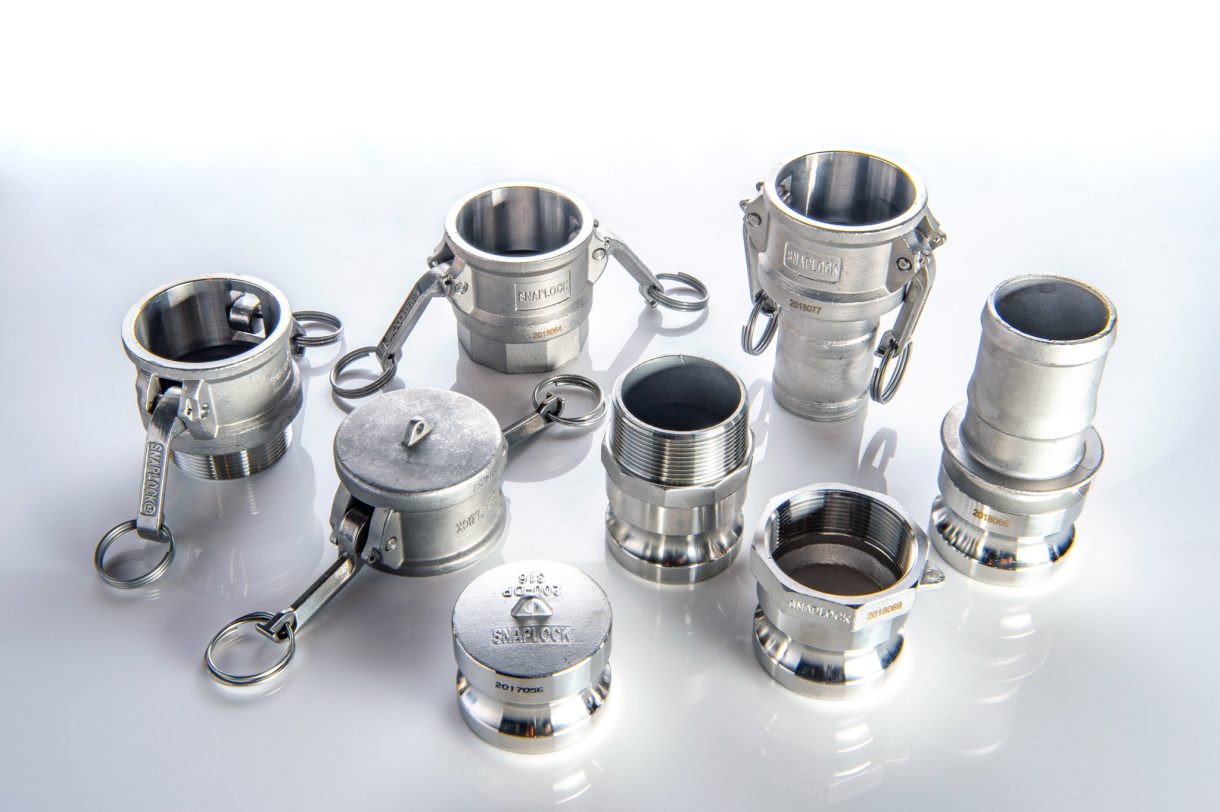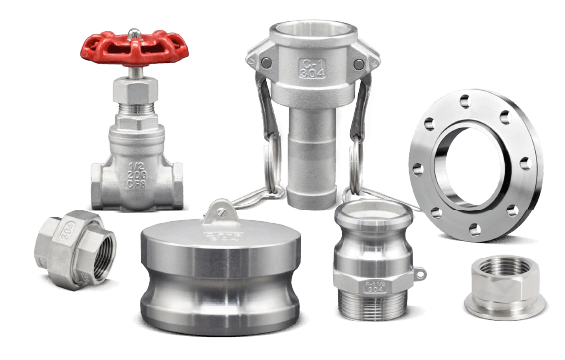

Фитинги Camlock, also known as cam and groove couplings, are specifically engineered to create a secure and reliable connection between hoses and pipes in fluid transfer applications. These quick-connect fittings are widely used in industries such as agriculture, petroleum, chemicals, and manufacturing due to their efficiency and ease of use. But do camlock fittings leak? While their design aims to ensure a leakproof seal, several factors—such as pressure limits, material compatibility, temperature fluctuations, and installation practices—can influence their performance. In this article, we will explore how camlock fittings function, the causes of potential leaks, and best practices to maintain a watertight seal.
By design, camlock fittings should not leak when properly installed and used within the recommended operating conditions. The locking mechanism, which involves a male adapter and a female coupler secured by cam arms, ensures a tight fit. The inclusion of a sealing gasket inside the coupler enhances the connection, preventing fluid leakage. However, external factors such as excessive pressure, extreme temperatures, incorrect material selection, or improper installation can compromise their effectiveness. Understanding these factors can help ensure long-lasting, leak-free performance.
Camlock fittings function through a simple yet effective mechanism that allows for quick, tool-free connections. The process involves:
This secure locking system makes camlock fittings ideal for quick hose connections in industrial settings, eliminating the need for threading, wrenches, or other tools.
Despite their durable design, camlock fittings may experience leaks due to various factors. Here are some common causes:
Each camlock fitting is designed with specific pressure ratings depending on its material and size. Using a camlock fitting beyond its maximum pressure capacity—such as in high-pressure fluid transfer—can weaken the gasket or cause the fitting to disengage, leading to leaks. Always check the manufacturer’s pressure specifications before installation.
High or low temperatures can impact the sealing efficiency of camlock fittings. If the fluid exceeds the fitting’s temperature tolerance, it may cause the gasket material to harden, soften, or degrade over time. Selecting a camlock coupling with a suitable gasket material (such as Buna-N, EPDM, or Viton) ensures compatibility with temperature-sensitive applications.
Camlock fittings come in various materials, including:
Selecting a material that is not suited to the transported fluid can lead to chemical reactions, corrosion, or material degradation, which may result in leaks.
Camlock fittings are designed for hand-tightening without additional tools. Over-tightening the cam arms or using excessive torque with a wrench can deform the gasket, damage the cam arms, or warp the coupling body, compromising the seal. Ensuring proper alignment and securing the fitting by hand will help maintain its integrity.
To ensure leak-free operation, regular maintenance and proper handling of camlock couplings are essential. Follow these best practices:
A leakproof camlock starts with the right choice for your needs. Consider these key factors when selecting your fitting:
For more insights, read our other blog, The Ultimate Guide to Cam Locks, which explores material selection and applications in depth.
Фитинги Camlock are designed to provide a reliable, leakproof solution for fluid transfer in various industrial applications. However, their effectiveness depends on proper installation, material compatibility, and adherence to pressure and temperature limits. By following best practices for selecting, maintaining, and using camlock couplings, you can minimize the risk of leaks and ensure long-lasting performance.
Looking for high-quality camlock fittings? Explore ProCamlock’s extensive range of stainless steel, aluminum, brass, and polypropylene camlock couplings to find the perfect fit for your application.
